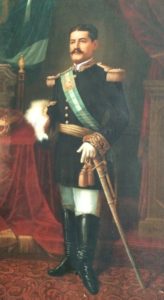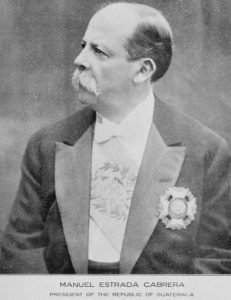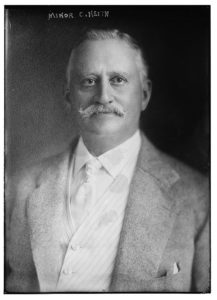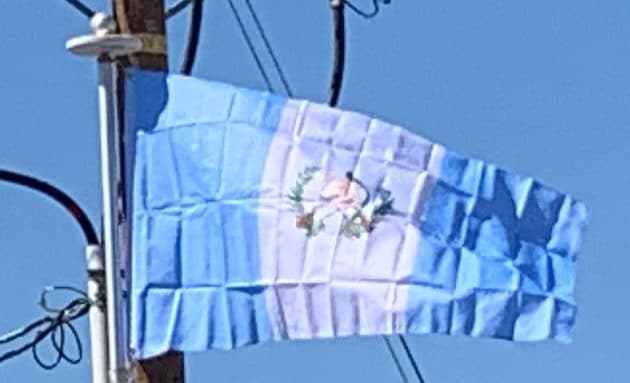José María Reina Barrios was President between 1892 and 1898. During Barrios’s first term in office, the power of the landowners over the rural peasantry increased. He oversaw the rebuilding of parts of Guatemala City on a grander scale, with wide, Parisian-style avenues. He oversaw Guatemala hosting the first “Exposición Centroamericana” (“Central American Fair”) in 1897. During his second term, Barrios printed bonds to fund his ambitious plans, fueling monetary inflation and the rise of popular opposition to his regime.

His administration also worked on improving the roads, installing national and international telegraphs and introducing electricity to Guatemala City. Completing a transoceanic railway was a main objective of his government, with a goal to attract international investors at a time when the Panama Canal was not yet built.
Manuel Estrada Cabrera regime (1898–1920):
After the assassination of general José María Reina Barrios on 8 February 1898, the Guatemalan cabinet called an emergency meeting to appoint a new successor, but declined to invite Estrada Cabrera to the meeting, even though he was the designated successor to the Presidency. There are two different descriptions of how Cabrera was able to become president. The first states that Cabrera entered the cabinet meeting “with pistol drawn” to assert his entitlement to the presidency, while the second states that he showed up unarmed to the meeting and demanded the presidency by virtue of being the designated successor.

The first civilian Guatemalan head of state in over 50 years, Estrada Cabrera overcame resistance to his regime by August 1898 and called for elections in September, which he won handily. In 1898 the Legislature convened for the election of President Estrada Cabrera, who triumphed.
One of Estrada Cabrera’s most famous and most bitter legacies was allowing the entry of the United Fruit Company (UFCO) into the Guatemalan economic and political arena. As a member of the Liberal Party, he sought to encourage development of the nation’s infrastructure of highways, railroads, and sea ports for the sake of expanding the export economy. By the time Estrada Cabrera assumed the presidency there had been repeated efforts to construct a railroad from the major port of Puerto Barrios to the capital, Guatemala City. Due to lack of funding exacerbated by the collapse of the internal coffee trade, the railway fell 100 kilometres (60 mi) short of its goal. Estrada Cabrera decided, without consulting the legislature or judiciary, that striking a deal with the UFCO was the only way to finish the railway. Cabrera signed a contract with UFCO’s Minor Cooper Keith in 1904 that gave the company tax exemptions, land grants, and control of all railroads on the Atlantic side.

In 1906 Estrada faced serious revolts against his rule; the rebels were supported by the governments of some of the other Central American nations, but Estrada succeeded in putting them down. Elections were held by the people against the will of Estrada Cabrera and thus he had the president-elect murdered in retaliation. In 1907 Estrada narrowly survived an assassination attempt when a bomb exploded near his carriage. It has been suggested that the extreme despotic characteristics of Estrada did not emerge until after an attempt on his life in 1907.
